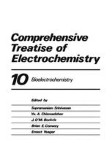Search
Search Results
-
Uses and applications of polymers
Our knowledge of chemistry has been built almost entirely on the detailed study of small molecules. It is not particularly surprising that, in order...
-
Polymers
Polymers are all around us. They are the main components of food (starch, protein), clothes (silk, cotton, polyester, nylon), dwellings...
-
Organogermanium Compounds
The preparation of Ge(CH3)3H and Ge(CH3)3D by reduction of Ge(CH3)3Cl or Ge(CH3)3Br with LiH or LiD was mentioned without experimental details [1]....
-
Small-angle neutron scattering and neutron reflectometry
Diffraction methods, interpreted loosely, could be applied to the techniques of wide-angle X-ray scattering, small-angle X-ray scattering, electron...
-
Dinitrogen Compounds
There are no direct observations of the N2H radical. Indirect evidence for its formation was obtained from experimental studies on the reaction NH2...
-
Kinetics of domain growth in systems with thermal gradient
Monte Carlo simulations have been carried out to study the growth kinetics after a rapid quench of a system with nonconserved order parameter into a...
-
Discrete models for chemically reacting systems
Nonequilibrium spatially distributed chemically reacting systems are usually described in terms of reaction-diffusion equations. In this article, a...
-
Phase diagrams in the binary systems of tetracyanoethylene with mesitylene, durene and pentamethylbenzene
The phase diagrams of the binary systems of tetracyanoethylene (TCNE) with some methylbenzenes were determined by differential scanning calorimetry....
-
Biocatalytic Applications
Among all the types of enzyme-catalysed reactions, hydrolytic transformations involving amide- and ester-bonds are most easy to perform by using...
-
Kinetics of Rate Processes on Uniform Surfaces
In the foregoing chapter, general formulas have been presented for calculating the rates of elementary processes on a uniform surface with allowance...
-
Adherence and Fracture Mechanics
Cohesion of solids is insured by a number of well-known forces (van der Waals, ionic, metallic, covalent) and their rupture occurs by propagation of...
-
Ordering of metal atoms in binary ccp, hcp, and bcc alloys
Crystal structures of 27 ccp, 27 bcc, and 18 hcp ordered M x N y alloys with single coordination T
i M of all M atoms and single coordination T... -
Adsorption Studies using Low Energy Electron Diffraction
Low-energy electron diffraction(LEED) has been the most widely-used experimental technique for the characterization of surface structures for the...
-
Fluctuations and lack of self-averaging in the kinetics of domain growth
The fluctuations occurring when an initially disordered system is quenched at time t =0 to a state, where in equilibrium it is ordered, are studied...
-
A new treatment of chemical reactivity: Development of EROS, an expert system for reaction prediction and synthesis design
An expert system for the prediction of the course of organic chemical reactions and for the design of organic syntheses has been built. It does not...
-
Structural and mechanical properties of biopolymer gels
The structural and mechanical properties of gels formed from biopolymers are discussed both in terms of the techniques used to characterise these...
-
Swelling equilibrium studies of elastomeric network structures
Until recently, interpretation of swelling equilibrium experiments rested on the Flory-Rehner equation developed in 1943 for networks which deform...
-
Light, Neutron and X-Ray Scattering Techniques for Studying Polymer Blends
It is not the purpose of this chapter to enter into the details of scattering theory but rather to outline the principles and explain the...
-
The Origin of Electrical Potential in Biological Systems
Electrical potential of biological systems orginates from various sources such as the existence of free ions in the biological systems, ionized...
